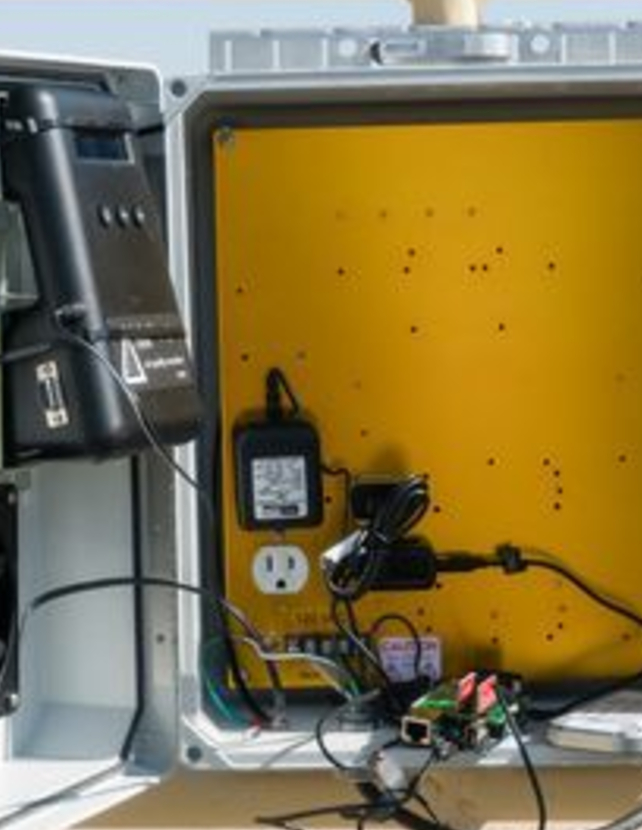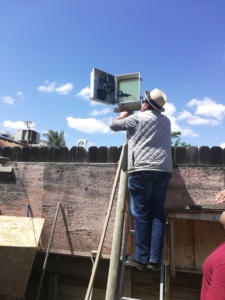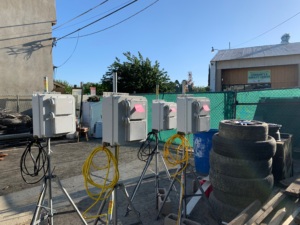Collaborating with Communities for Cleaner Air
Program
-
Focus Areas
Environmental Health, Healthy Communities -
Issues
Population Health

West Oakland, San Ysidro, and Fresno have two common characteristics: their residents are predominantly people of color, and they experience significantly higher levels of air pollution than other California neighborhoods. These communities also experience high rates of asthma, cardiovascular disease and premature death.
In 2019, PHI’s Tracking California planned and conducted workshops in collaboration with community-based organizations working in these communities, to train local residents and community members in the foundations of establishing a community air monitoring program. A total of seventy-eight participants took part in three workshops:
- In Northern California, the West Oakland Environmental Indicators Project is a community-based environmental justice organization of residents in the predominantly low-income, African American neighborhood of West Oakland who are concerned about air pollution from truck traffic around the Port of Oakland and other heavy industry in the neighborhood.
- Residents in the predominantly Latino San Joaquin Valley experience the worst air quality in the nation. Fresno residents and the Central California Environmental Justice Network (CCEJN) work to identify areas not being monitored by state regulators and to find pollution hot spots from pesticide spraying and the region’s many oil and gas facilities.
- Led by Casa Familiar, the leading service and community development organization in the majority Latino community of San Ysidro, residents in this Mexican border community are documenting air pollution threats from lines of idling vehicles at the Ports of Entry, trade-related commercial trucks, and cross-border transport of pollutants.
Community air monitoring can help measure how air pollution changes over time and space and identify areas that are highly affected. Ultimately, air monitoring will help each community develop strategies to reduce exposure to air pollution as well as to improve air quality and related health outcomes.
Attendees of the Tracking California workshops took home valuable resources, including Tracking California’s “Guidebook on Establishing a Community Air Monitoring Network” and the California Air Resources Board’s “14 Community Air Monitoring Plan Elements.” They also heard speakers from other communities where air monitoring has been successful, received worksheets to help their planning, and began brainstorming the path toward developing their own community air monitoring projects.
The participants reported that the workshops were helpful in increasing their understanding of how to plan and carry out a community air monitoring project. One participant from Fresno stated, “There were a lot of in-depth explanations, detailed presentations and thorough discussions in regards to who to notify and getting answers from experts.” A West Oakland participant said the workshop was “Full of information I can take back to my neighborhood and lots to think about.”
 At the time of the 2019 workshops, several community participants had just started planning their air monitoring work. By mid-2020, these local leaders had started building air monitors in their communities and joined larger collaboratives working on air monitoring projects throughout the state. Since the workshops took place, Tracking California has continued to provide technical assistance and support to groups like Casa Familiar and Central California Environmental Justice Network in calibrating monitors, analyzing monitor data, making siting recommendations, and using data to inform action. Workshop attendees John Hernandez from Imperial County and Alejandro Amador from Casa Familiar also reported on progress they have made with air monitoring projects at the border during a July 2020 presentation to the California Air Resources Board (CARB).
At the time of the 2019 workshops, several community participants had just started planning their air monitoring work. By mid-2020, these local leaders had started building air monitors in their communities and joined larger collaboratives working on air monitoring projects throughout the state. Since the workshops took place, Tracking California has continued to provide technical assistance and support to groups like Casa Familiar and Central California Environmental Justice Network in calibrating monitors, analyzing monitor data, making siting recommendations, and using data to inform action. Workshop attendees John Hernandez from Imperial County and Alejandro Amador from Casa Familiar also reported on progress they have made with air monitoring projects at the border during a July 2020 presentation to the California Air Resources Board (CARB).
 Tracking California also works with these communities through the AIRE Collaborative, a statewide network of environmental justice organizations working to curb air pollution and address gaps in the state’s air monitoring and pollution control programs. Together the organizations in this network seek to ensure that impacted communities have meaningful involvement in the state’s efforts to reduce air emissions and to monitor CARB’s process in addressing the needs of the communities.
Tracking California also works with these communities through the AIRE Collaborative, a statewide network of environmental justice organizations working to curb air pollution and address gaps in the state’s air monitoring and pollution control programs. Together the organizations in this network seek to ensure that impacted communities have meaningful involvement in the state’s efforts to reduce air emissions and to monitor CARB’s process in addressing the needs of the communities.
Previous work by Tracking California in supporting community-based air monitoring helped to draw attention to shortcomings in regulatory air monitoring in the Imperial Valley and informed the implementation of two state legislative measures (AB 617 and AB 134) adopted to curb air pollution in the state’s most impacted communities.
Work With Us
You change the world. We do the rest. Explore fiscal sponsorship at PHI.
Support Us
Together, we can accelerate our response to public health’s most critical issues.
Find Employment
Begin your career at the Public Health Institute.
